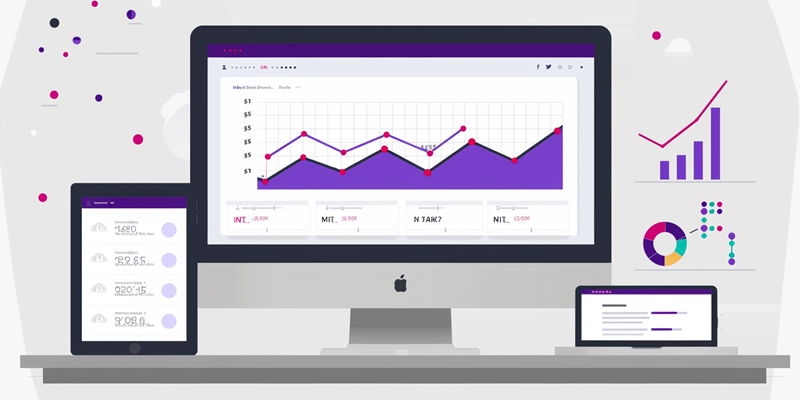Customer Data Platforms (CDPs) have emerged as pivotal tools in the realm of marketing, evolving from their nascent stages to robust systems that mitigate past challenges and enable marketers to drive personalized campaigns with greater efficiency.
The Early Stages of CDPs
Challenges in Integration and Flexibility
In their early inception, Customer Data Platforms faced significant hurdles. Data silos within organizations impeded a unified view of the customer, which is paramount to personalizing the customer experience. Integrating various data sources was not only technically challenging but also time-intensive, leading to delays in realizing the value of CDP investments. Rule construction within these platforms was another area that lacked flexibility. The rigid nature of early CDPs meant that marketers could not swiftly adapt to changing market conditions or customer behaviors, thus limiting the real-time responsiveness required in a fast-paced digital landscape.
Data Governance and Security Concerns
Initial CDPs were also marred by data governance issues. Ensuring compliance with various regional and international data privacy regulations became increasingly complex as customer data proliferated across platforms. Security, a non-negotiable aspect of any data platform, posed significant concerns as breaches could undermine customer trust and result in substantial repercussions. These factors contributed to an increased total cost of ownership, as organizations had to invest heavily in addressing these critical areas to protect their brand reputation and customer loyalty.
The Modern Era of CDPs
Integration with Snowflake’s Data Cloud Platform
Modern CDPs, particularly those integrated with Snowflake’s Data Cloud Platform, boast advanced capabilities that address the limitations of their predecessors. Redundancies in data copies, which often plagued older systems, are virtually eliminated, enhancing operational efficiency and data integrity. The partnership between CDPs and the data cloud platform empowers businesses to leverage comprehensive data analysis, sophisticated customer segmentation, and pinpointed targeting — all from a single source of truth.
The Advantages of Packaged vs. Composable CDPs
Snowflake’s ecosystem encompasses two distinct types of CDPs: the packaged and the composable. Packaged CDPs offer a managed solution, which is ideal for companies with limited technical resources. They provide a seamless, pre-configured system that simplifies the deployment and management processes. Conversely, composable CDPs cater to organizations with a penchant for granular control, especially those with preexisting investments in Snowflake. While the composable model affords customization and nuanced control over data processes, it demands a more significant resource investment, posing a potential challenge for companies with constrained budgets or limited technical staff.
Strategizing on CDP Adoption
Assessing Business Needs and Resources
Deciding between a packaged or composable CDP is a crucial strategic move for businesses. This decision should be grounded in a clear understanding of the company’s specific needs. Factors such as the complexity of desired customer segmentation, speed of data access, and channel activation strategies should be scrutinized meticulously. Businesses must also assess their data management resources, existing data collection methods, and the need for robust ID resolution mechanisms. Acknowledging these parameters helps companies pinpoint the CDP model that will best catalyze their marketing efforts.
The Hybrid Approach to CDPs
For some organizations, neither a purely packaged nor entirely composable CDP might be the right fit. A hybrid model could serve as the optimal solution, allowing businesses to take advantage of both worlds. A hybrid CDP can offer pre-built functionalities while also providing leeway for customization where necessary. This flexibility enables companies to tailor their CDP usage to specific campaigns or marketing objectives without the need to fully commit to either the packaged or composable end of the spectrum. However, this approach still requires careful consideration of the facets mentioned earlier, ensuring the selected CDP aligns seamlessly with the business’s overarching goals.
Snowflake’s Role in the CDP Landscape
The Neutrality Advantage
Snowflake’s unique position in the market as a neutral data platform is a significant draw for companies looking to avoid potential conflicts of interest that might arise with other data providers. Operating across all three major public clouds, Snowflake offers a consistent and conflict-free infrastructure. This neutrality allows technology to converge with data effectively, fostering a more unbiased and comprehensive marketing data stack that transcends the limitations of being tethered to a single cloud provider.
The Foundation for Modern Marketing Data Stacks
Customer Data Platforms (CDPs) have become essential tools in the marketing industry, having significantly evolved from their initial stages. These sophisticated systems now effectively address the complexities and challenges previously encountered by marketers. CDPs’ capabilities have expanded, allowing for more seamless integration and handling of consumer information. This development has empowered marketers to craft personalized campaigns with an unprecedented level of accuracy and effectiveness. By unifying customer data from multiple sources into a single, comprehensive view, CDPs facilitate deeper insights and better-targeted marketing efforts, leading to improved customer experiences and higher conversion rates. The maturation of CDPs marks a significant advancement in the realm of data-driven marketing, making customer engagement strategies more impactful than ever before. With CDPs, marketers can now efficiently manage and utilize vast amounts of data, paving the way for more personalized and successful marketing endeavors.

